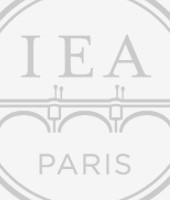Mathematical Instruments between Material Artifacts and Ideal Machines: Their Scientific and Social Role before 1950
Antoni Malet (2017-2018 Paris IAS fellow) will participate as a discussant in the workshop "Mathematical Instruments between Material Artifacts and Ideal Machines: Their Scientific and Social Role before 1950" organized by the Mathematisches Forschungsinstitut Oberwolfach
About the workshop
Since 1950 more and more mathematicians are familiar with the digital computer in their professional practice. But before this time a lot of other instruments, mostly forgotten, were also commonly used, both to compute numerical or geometrical objects, to explore mathematical situations, to conjecture new results and to apply mathematics in various scientific contexts. The problem of characterizing the mathematical objects that can be constructed with a given set of instruments gave birth regularly to deep theoretical investigations, since the Euclidean geometry of constructions with straightedge and compass until Shannon’s theorem, which, in 1941, stated that the functions constructible with a differential analyzer are exactly the solutions of algebraic differential equations. Beyond these mathematical aspects, instruments are to be considered also as social objects, inscribed in a given time and in a given cultural tradition, and crossing the points of view of the inventor, the maker, the user, and the collector. In this sense, mathematical instruments are an important part of the mathematical cultural heritage. They are widely used in many science museums to show the cultural value of mathematics to the public. This workshop shall bring together mathematicians, historians, philosophers, collection curators and education scholars to confront the various approaches to the history of mathematical instruments, and to compare the definition and role of these instruments over time keeping in mind the following fundamental questions: What is mathematical in a mathematical instrument? What kind of mathematics is involved? What does it mean to embody mathematics in a material artifact? And how do non-mathematicians use this kind of embodied mathematics?
More information (Mathematisches Forschungsinstitut Oberwolfach's website)
|
|
|
Towards a history of mathematical consistency: tacit knowledge and conceptual change in early modern mathematics 01 October 2017 - 30 June 2018 |
|
|

